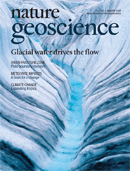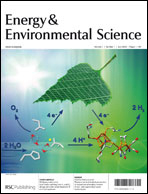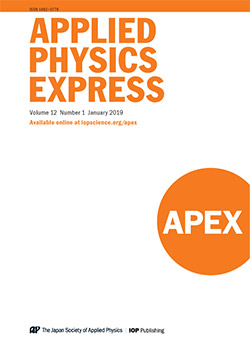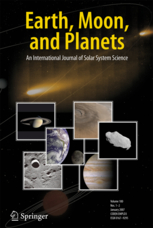Physical Review Letters (PRL), established in 1958, is a peer-reviewed, scientific journal that is published 52 times per year by the American Physical Society. As also confirmed by various measurement standards, which include the Journal Citation Reports impact factor and the journal h-index proposed by Google Scholar, many physicists and other scientists consider Physical Review Letters to be one of the most prestigious journals in the field of physics.

Advances in Physics is a bimonthly scientific journal published by Taylor & Francis that was established in 1952. The journal is also issued as a supplement to the Philosophical Magazine. Peer review is determined on a case-by-case basis. The editors-in-chief are Paolo Radaelli and Joerg Schmalian.
Physical Chemistry Chemical Physics is a weekly peer-reviewed scientific journal publishing research and review articles on any aspect of physical chemistry, chemical physics, and biophysical chemistry. It is published by the Royal Society of Chemistry on behalf of eighteen participating societies. The editor-in-chief is Anouk Rijs,.

Nature Materials is a monthly peer-reviewed scientific journal published by Nature Portfolio. It was launched in September 2002. Vincent Dusastre is the launching and current chief editor.

Nature Chemical Biology is a monthly peer-reviewed scientific journal published by Nature Portfolio. It was established in June 2005 by founding Chief Editor Terry L. Sheppard as part of Nature Publishing Group. Sheppard was the Chief Editor of the journal 2004–2022. The current editor-in-chief is Russell Johnson.

Advanced Functional Materials is a peer-reviewed scientific journal, published by Wiley-VCH. Established in February 2001, the journal began to publish monthly in 2002 and moved to 18/year in 2006, biweekly in 2008, and weekly in 2013.

Physical Review B: Condensed Matter and Materials Physics is a peer-reviewed, scientific journal, published by the American Physical Society (APS). The Editor of PRB is Stephen E. Nagler. It is part of the Physical Review family of journals. The current Editor in Chief is Randall Kamien. PRB currently publishes over 4500 papers a year, making it one of the largest physics journals in the world.

Nature Geoscience is a monthly peer-reviewed scientific journal published by the Nature Publishing Group. The Chief Editor is Tamara Goldin, who took over from Heike Langenberg in February 2020. It was established in January 2008.

Energy & Environmental Science is a monthly peer-reviewed scientific journal publishing original (primary) research and review articles. The journal covers work of an interdisciplinary nature in the biochemical and biophysical sciences and chemical and mechanical engineering disciplines. It covers energy area. Energy & Environmental Science is published by the Royal Society of Chemistry.

ACS Nano is a monthly, peer-reviewed, scientific journal, first published in August 2007 by the American Chemical Society. The current editor in chief is Xiaodong Chen. The journal publishes original research articles, reviews, perspectives, interviews with distinguished researchers, and views on the future of nanoscience and nanotechnology.

Nature Chemistry is a monthly peer-reviewed scientific journal published by Nature Portfolio. It was established in April 2009. The editor-in-chief is Stuart Cantrill. The journal covers all aspects of chemistry. Publishing formats include primary research articles, reviews, news, views, highlights of notable research from other journals, commentaries, book reviews, correspondence. Other formats are analysis of issues such as education, funding, policy, intellectual property, and the impact chemistry has on society.

Applied Physics Express or APEX is a scientific journal publishing letters, with usually no more than three pages per (concise) article. The main purpose is to rapidly publish original, timely, and novel research papers in applied physics. As part of its aim, the journal intends for papers to be novel research that has a strong impact on relevant fields and society. It is notable that the journal considers satisfaction of this criterion as showing the paper merits priority handling in the review and publication processes. In keeping with this aim, its issues are published online on a weekly basis. The print version is published monthly.
Physical Review E is a peer-reviewed, scientific journal, published monthly by the American Physical Society. The main field of interest is collective phenomena of many-body systems. It is currently edited by Uwe C. Täuber. While original research content requires subscription, editorials, news, and other non-research content is openly accessible.

Earth, Moon, and Planets is a peer-reviewed scientific journal, published approximately ten times per year by Springer Science+Business Media. It was established in 1969 under the title The Moon, was known as The Moon and the Planets from 1978 to 1983, and was first published under the current title in February 1984. The editor-in-chief is Jamie D. Gilmour. The journal's main focus is on research about the Solar System. Besides original research articles, Earth, Moon, and Planets publishes conference proceedings, review articles, book reviews, and special issues.

Nature Physics is a monthly peer-reviewed scientific journal published by Nature Portfolio. It was first published in October 2005. The chief editor is David Abergel.

Physics of the Earth and Planetary Interiors, established in October 1967, is a biweekly peer-reviewed scientific journal published by Elsevier. The co-editors are A. Ferreira, K. Hirose, D. Jault, and C. Michaut.
Physical Review A is a monthly peer-reviewed scientific journal published by the American Physical Society covering atomic, molecular, and optical physics and quantum information. As of 2021 the editor was Jan M. Rost.
Bulletin of the Seismological Society of America (BSSA) is a bimonthly peer reviewed scientific journal published by the Seismological Society of America. The editor-in-chief is Thomas Pratt. The journal covers seismology and related disciplines. Topical coverage includes theory and observation of seismic waves, specific earthquakes, the structure of the Earth, earthquake sources, hazard and risk estimation, and earthquake engineering. Publishing formats include regular papers and short notes. Publication has been continuous since 1911.

ACS Photonics is a monthly, peer-reviewed, scientific journal, first published in January 2014 by the American Chemical Society. The current editor in chief is Romain Quidant. The interdisciplinary journal publishes original research articles, letters, comments, reviews and perspectives.

Nature Reviews Physics is a monthly peer-reviewed scientific journal published by Nature Portfolio. It was established in 2019 as an online-only journal. The editor-in-chief is Iulia Georgescu.















